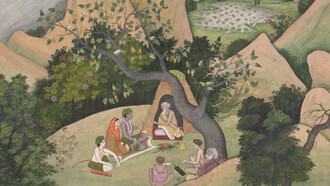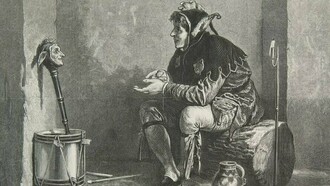Examples of racial discrimination are demonstrated every day, all over the world. Indicative of an indiscriminate attack, is the example of Senator for life, Liliana Segre who had the ‘guilt’ of surviving the holocaust in the Nazi extermination camp of Auschwitz. Despite the horrors of recent history, humanity has been taught nothing, in fact, the holocaust has been followed by other infamous examples in many parts of the world, although not all of them racially motivated, with millions and millions of deaths and hundreds of thousands displaced: from 1975 to 1979 the massacre of a third of Cambodia's population by Pol Pot's Khmer Rouge regime, in 1994 the genocide in Rwanda, from 1989 to 2003 the civil war in Liberia and Sierra Leone, in 2011 the civil war in Syria, still on going, as is the civil war in Yemen that began in 2015. The horrors continue. All these wars, despite the fact that they were waged within the countries in which they began, even with indirect interventions by external forces, as in the case of the Syrian and Yemen civil wars, stem from religious hatred, fanaticism, the great diversity between rich and poor, ignorance and human vanity.
Today, more than ever, we are constantly seeing ugly racist movements. But where does all this come from? Let us try to make a historical and also psychological and social analysis of the issue. Historically we must not forget that it was the famous Swedish Taxonomist Linnaeus who in 1730 branded men ‘dark skin’ (who knows what he had in mind with the expression ‘dark skin’?) as indolent, lascivious and sizing (they are his words). But Linnaeus at that time was not alone in defining Africans and other peoples in this way. The German naturalist Johann Blumenbach wrote that the ‘blacks’, as he called them, were inferior beings, similar to animals and always highlighted. Blumenbach also made a sort of craniometric classification of beings as a shameless justification for his ‘scientific racism’. Shortly after, the academic Italian, Cesare Lombroso, was no more diplomatic. According to him, the criminal behavior of individuals was related to cranial measurements, as it was for Blumenbach. The strange thing about all this was that anthropologists, naturalists and ‘scientists’ classified the difference in this way! Let alone what ordinary mortals could have in mind at those times on the ‘difference!
Many years have passed since Linnaeus, Blumenbach and Lombroso and have things changed? Sadly, they are not much different. Racism is still very much alive, even if now in different forms than the past, for example, those of the Ku Klux Klan in the United States of America, or apartheid in South Africa, and we are not talking about centuries ago. Today, racism is much more subtle, and it is absolutely not true that it is 'dark-skinned' men who are always discriminated against.
A very important discriminating factor is money and political power, more than the colored of the skin, as demonstrated by the election to the American presidency of Barak Obama. I would like to quote a very symbolic anecdote told by a famous African-American actor, Denzel Washington. One day while he was inside an elevator, at one time, a lady of a certain age, classed we could say as, W.A.S.P (White Anglo-Saxon Protestant). Wasp is an American or American descendant of the first British colonizers in America, especially if of ‘pure’ English descent. As soon as she saw Denzel, the lady hesitated to enter. Although she did, but she was clearly very reluctant. During the ascent, it happened that the two looked at each other in the face and Denzel said who he really was (maybe he did it on purpose). At that point (Mrs. Wasp) totally changed her attitude and she greeted him, shook his hand and with a big smile also asked him for an autograph. This anecdote is very indicative, but it is also a prophetic vision of our near future and so well described by the American writer Tom Wolfe in his literary masterpiece entitled: The Bonfire of Vanities, in which what matters is not the colored of the skin of the various characters, but how much money he has in the bank.
Slavery
When Charles Darwin arrived in Brazil on February 28th, 1832, with His Majesty's vessel ‘The Beagle’, the country used slavery, like so many countries at the time. He was horrified by the way Brazilian settlers treated slaves, considered solely as a workforce and trade object: they were bought and sold like other commodities. Darwin became a fervent anti-slavery campaigner and promoted movements after his return to England, to end slavery. On paper his attempt, along with that of many other characters at this time, led to success and in 1838 slavery was banned in the British colonies.
Later this occurred in other countries using slavery, for example, in the French, Dutch, Spanish and Portuguese colonies, although in reality it continued for a long time to come and, in different forms, unfortunately, it still exists today, or do we believe that illegal migrants, especially those from certain Asian and African countries, arrive in Italy, not only of their own free will but by their own economic means and therefore freely? For example, has anyone ever wondered why the boats from North Africa, mainly Libya, where migrants are piled up like cattle, are full of single women, pregnant women and many unaccompanied children? Has anyone ever wondered why there are so many children in these boats are on their own? Has anyone ever wondered where their parents went? These are the questions that we should all answer, which governments should answer before someone voices their opinions on illegal migration and before unnecessary laws are decreed. Faced with this tragedy, European governments are quarrelling and worrying about who should assist them and provide for them immediately. In the ports where they arrive, in the light of the international Press taking photographs, they try to help them disembark, to provide them with blankets, water and food, but then do they wonder why they are there and who brought them to us?
Human ‘race’
Let us immediately make clear a very important fundamental fact, namely that the human 'race' has no scientific basis and that therefore there is no genetic basis that can justify its existence. All men in the world belong to one species, not to different races, that is Homo sapiens. Then why is everyone talking about race? Many journalists, even some doctors, also use this word on television, which is the most widespread means of mass communication. They use it with extreme ease. In doing so, children grow up with the concept of ‘race’ in their heads, thinking, as we thought as children more than half a century ago, that the world has white, black, yellow and even redskins. In my childhood, schools posted on the walls the globes and panels representing the five main races of the world, because next to the four just listed, there was the Jewish one, even though the war and Nazi fascism had been over for more than a decade.
In conclusion, the concept of "race" was born only for political and social reasons, to credit other people with different customs, faults that they have never had, for the illegal hoarding of their goods, their territories and which basically have never had the opportunity to defend themselves, using force. The most emblematic example, but there would be many more, is the decimation of the natives of North America from 1492 onwards.
Genetic variability
All these crimes had to be justified. The people that were suppressed were considered ‘inferior’, not having a soul, they were similar to animals with which everything could be done, including decimating them, as the German Nazis did. These ‘inferior’ people had no right to exist, although there was no scientific evidence that their intellectual, cognitive or predisposition to certain diseases had a genetic origin.
In essence, as Charles Darwin first said, genetic variability (because no one is the same as another) in our species, Homo sapiens, does not scientifically allow us to talk about human races. The most unspeakable fact is that ordinary people do not want to accept it and not only because they do not have the cultural and cognitive skills to do so, is that genetic variability, which nevertheless exists (and it is our salvation, otherwise Covid-19 would have exterminated us all), within the same population it is wider than between different populations, even if they live on different continents.
For example, between me and my neighbor, there may be more genetic variability than between me and a Congolese from Kisangani! The term ‘breed’ can be used in animal husbandry and it is useful to classify artificially selected pets, but not for us. In conclusion, human races do not exist, but in the hypothetical and remote event that it proves otherwise, the worst breed would, unfortunately, be ours, the ‘white’ one.
Recommended readings
Todorov, T. 1982. La conquête de l'Amérique. The question de l'autre. Paris, Editions du Seuil.
Tartabini, A. 2019. “Colombian enterprice and Amerindian cannibalism”. Wall Street International Magazine, 12 Ottobre, pp.: 1-8.
Fredrickson, G.M. 2002. Racism: A short history. Princeton University Press, Princeton, NJ.
Mcghee, H. 2021. The sum of us: what racism costs everyone and how we can thrive together. Penguin Random House, New York.















